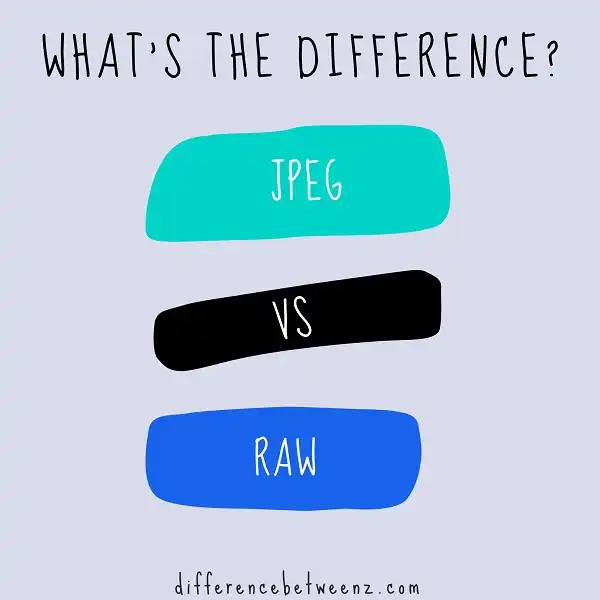In the photography world, there are two main types of files: jpeg and raw. Both have their strengths and weaknesses, but which one is right for you? In this article, we’ll take a look at the difference between jpeg and raw, so you can make the best decision for your needs.
What is JPEG?
JPEG is a compression format for digital images. JPEG compression works by discarding some of the image data, resulting in smaller file size. This makes JPEG ideal for storing and sharing photos and other images, such as those used on websites. JPEG compression is lossy, meaning that some of the image quality is lost when the image is compressed. However, JPEG provides several options for adjusting the amount of compression, allowing you to trade off file size for image quality. In addition, newer versions of the JPEG format use better compression algorithms that result in less image degradation. As a result, JPEG is a popular choice for storing and sharing photos and other images.
What is RAW?
RAW is a file format used by digital cameras and other imaging devices. RAW files are not compressed like JPEG or TIFF files, and they contain all of the data captured by the image sensor. This allows for more flexibility when editing, but it also means that RAW files are much larger in size.
RAW files can be converted to other formats using software like Adobe Camera Raw or Lightroom. However, this process can be time-consuming, and it often results in a loss of quality. As a result, many photographers choose to shoot in RAW format and then convert their files to JPEG or TIFF for storage or printing.
Difference between JPEG and RAW
When it comes to digital photography, there are two main file formats that photographers use: JPEG and RAW. JPEG files are smaller in size and take up less space on your memory card or hard drive. They are also easier to share online or via email. RAW files, on the other hand, are much larger in size and contain all of the data captured by your camera’s sensor. While RAW files take up more space, they offer a greater degree of flexibility when it comes to editing. RAW files also retain more detail than JPEGs, making them ideal for large prints. So, which file format should you use? Ultimately, it depends on your specific needs and workflow.
Conclusion
If you’re serious about photography, it’s important to understand the difference between jpeg and raw files. JPEGs are compressed files that lose some detail in order to save space, while raw files contain all of the image data captured by your camera’s sensor. Shooting in raw gives you more flexibility to edit your photos later on, but it also takes up more storage space on your computer or memory card. Ultimately, the decision whether to shoot in jpeg or raw depends on what you’re looking for from your photos. If you need high-quality images that can be printed out at large sizes, shooting in raw is the way to go.


